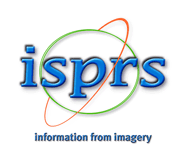Interpretation of non-metric morphological traits of human incisors through their 3D models’ analysis
Keywords: digital odontology, micro-focus computed tomography, dental morphology, incisors, labial convexity
Abstract. Teeth are one of the most frequently studied objects in anthropology and some other scientific disciplines. Our recent works on development of automated measurement techniques for incisors evoked interest to studies of non-metric morphological traits. Such assessments are traditionally made by means of visual analysis in dental anthropological research, including the trait chosen for testing automated algorithms in the current research – incisor labial convexity. 3D models of incisors of Sunghirian adolescents (Sunghir 2 and Sunghir 3) were generated after micro-focus tomographic scanning; teeth with complete morphology included in the study. On the basis of the proposed technique the developed software performs orientation of models, their sectioning, surface and contour analysis, measurements. As a result, two indicators were proposed for digital assessment of incisor labial convexity. Their combined usage showed interesting results for studying the non-metric trait on seven teeth, as well as for morphological studies beyond classical approaches, e.g. when used on lower incisors.





